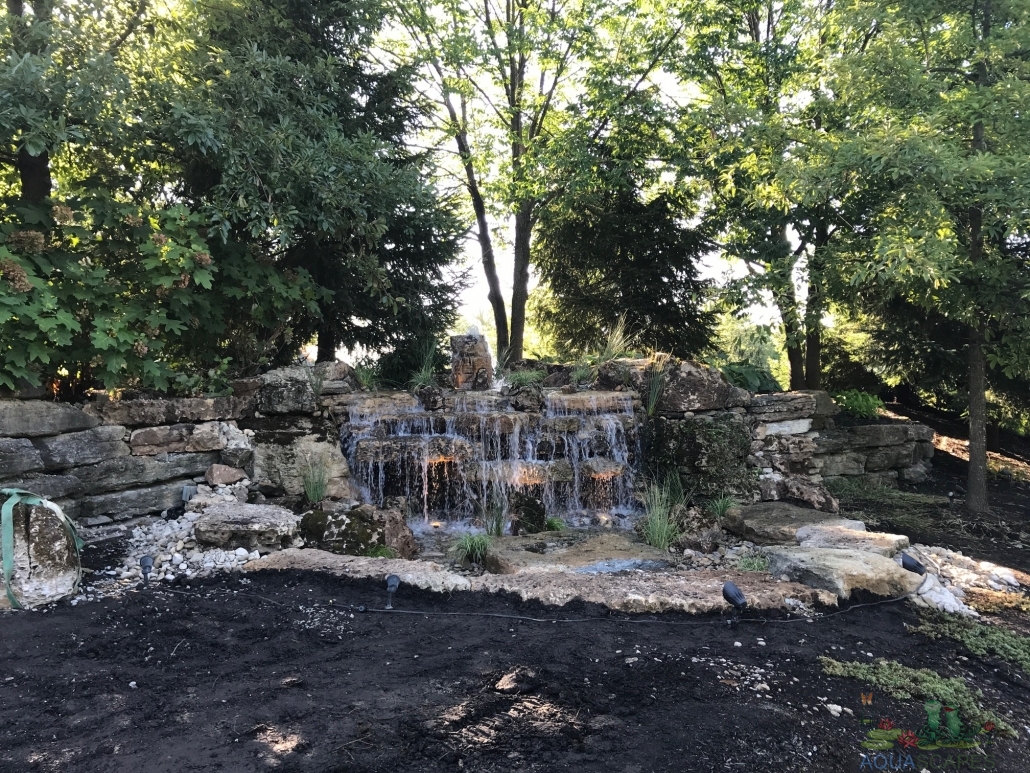Common Pond Design Questions and Answers
Pond Design Q&A
& other FAQ’s
Question: How deep should a koi pond be?
What is the maximum depth you recommend? How do I figure out how deep it needs to be? Is there an easy formula or something similar that can help me figure this out?
Answer: The deeper the pond, the more stable the water temperature will be. The average depth should be 1/3 to 2/3 of its width. So a pond that is 10 feet wide should have a depth that ranges from 3 to 6 feet. If you want to find the maximum depth, multiply the width by 3 and then divide by 9 (or multiply by 2 and divide by 5). That number represents an approximation for the maximum practical depth at which you can plant rooted ponds plants such as lotus, lilies, and others. These numbers also represent guidelines only; if you feel your yard or property can support greater depths than that, then go ahead and create them! For ponds less than 12 inches deep, use a submersible pond pump, which is safer for fish and ponds. For ponds deeper than 12 inches, you should use a waterfall/stream pump.
Question: How can I keep the water from freezing over in winter?
Answer: In cooler weather ponds often freeze over. The amount of oxygen in the water decreases as the temperature drops; the fish become stressed and may die if there isn’t enough dissolved oxygen to support them (usually about 7ppm).
Remember: colder temperatures make less oxygen available! If your pond does freeze over it should be safe because ice is less dense than water; however, ponds with steep banks may pose a safety concern if they are deep enough to entrap someone within them – especially at night when it’s not safe to measure how deep the ice is.
There are several potential solutions:
– create a waterfall/stream that overflows into the pond and creates an inlet of constantly moving water; this provides oxygen and constantly mixes up the ponds’ surface, preventing it from freezing over completely.
– add an aerator (air pump) to increase dissolved oxygen levels so that fish can survive winter temperatures.
– add a pond heater or a form of electrical heating cable on the bottom of pond.
– create ponds where water drains out at one end – these ponds will never freeze over. If you want to do this, make sure there is easy access for you and your fish!
– ponds with fountains and ponds where water trickles down naturally due to gravity provide excellent oxygenation – so consider creating ponds like these.
Question: What aquatic plants should NOT be added to ponds?
Answer: Floating leaves of dandelions, primrose, iris, taro, and sweet flag are not good for ponds because they can block sunlight from other pond plants. Other floating leaves that may harm ponds include those of duckweed (which overwinters as turions) and the submerged leaves of yellow flag iris
Question: Can I do anything about algae blooms/scum in my ponds?
Answer: Algae blooms are caused by high levels of nutrients (phosphorus or nitrogen) in the water, which can come from bird droppings or other sources. Algae blooms are bad for ponds because they block sunlight and use up oxygen, creating both poor water quality and stressful conditions for fish.
The best way to deal with algae blooms is to prevent them by covering ponds (especially in the fall when fertilizers are used on ponds) and testing pond water regularly. You can also add barley straw, an EPA-registered algaecide available at garden centers, which works well in controlling surface algae. Always read the labels carefully before using either products or chemicals!
Of course, prevention is always much better than trying to correct issues after they’ve started – so test your ponds regularly for nutrients! Also, keep in mind that healthy ponds have fewer problems with algae than ponds that are overloaded with nutrients or have low oxygen levels.
Question: Can ponds be placed near ponds? What about ponds that share a water source?
Answer: Ponds can be designed to be safely located next to one another if they aren’t built right next to each other, but there are some design aspects you’ll need to take into consideration. First, don’t place ponds where the ground freezes in winter because this could allow pond water to seep into your neighbors’ ponds and create an ice dam (you can prevent this by building low dams at both ends of your pond). Also, consider how much shade your ponds will cast over each other; avoid casting too much shade or else it may interfere with photosynthesis for your ponds’ plant life.
More significantly, ponds that share a common water source (i.e., ponds that receive water from the same stream or recirculate the same water) must be carefully designed: ponds should have mismatched levels so they overflow into each other at different rates/times. This prevents fish from being stranded or washed from one pond to another. For example, ponds 1 and 2 could both overflow into 3 but also have their own separate overflows so as not to affect ponds 4 and 5’s functions…
Even more importantly, ponds that share a water source need to have completely separate intakes because fish can be damaged by being sucked into pumps found in ponds! Fish will suffocate if they’re accidentally pulled into these ponds instead of ponds 4 and 5.
Did you know?
Thanks for reading at Meyer Aquascapes! We hope you’ve enjoyed our post on garden pond design. Please leave a comment below if you liked it or have any questions. We’d love to hear from you! Thanks for stopping by!



